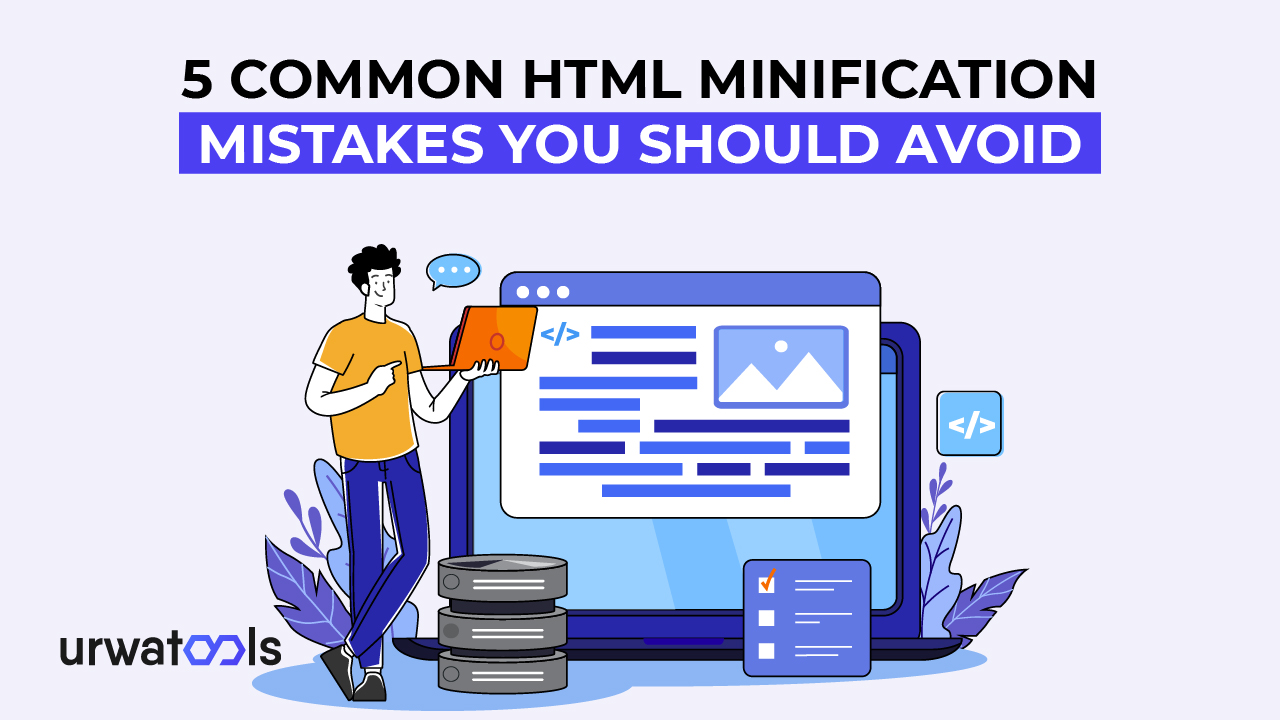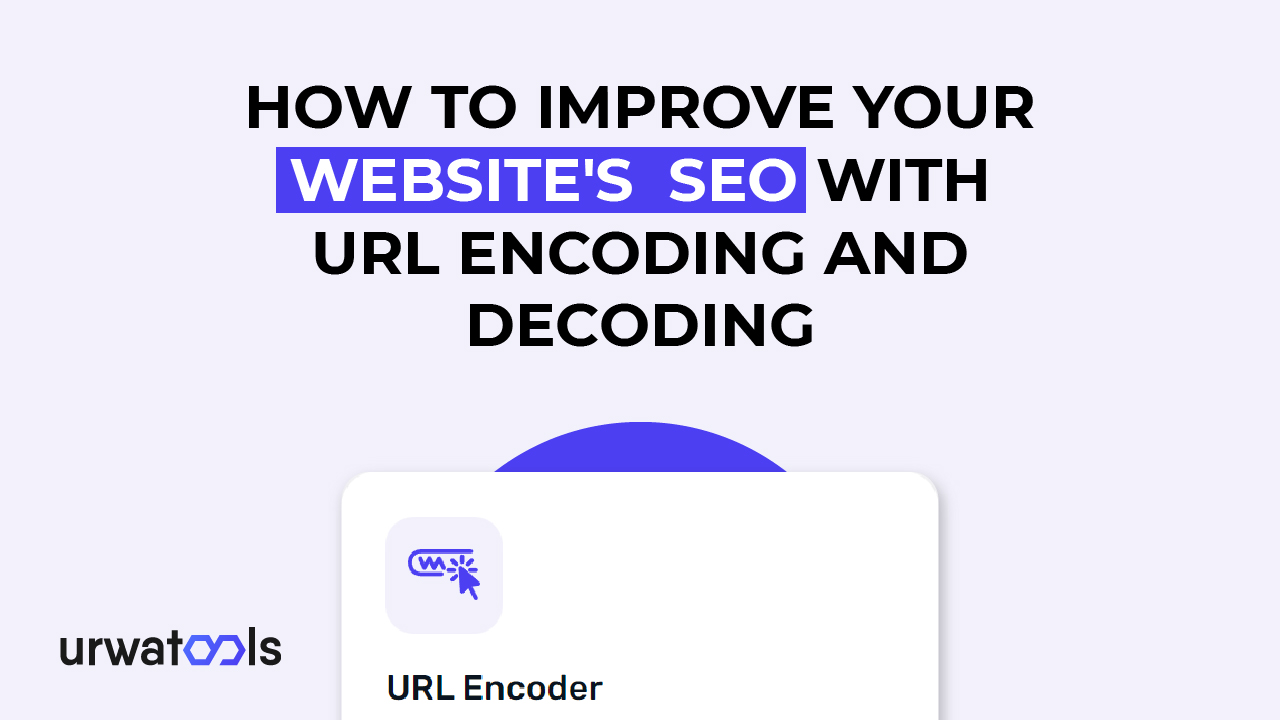Are you looking to optimize your website's performance? HTML minification can improve loading times and enhance the user experience. However, it's critical to avoid common mistakes that can hinder desired results. This article will explore five common HTML minification mistakes you should avoid, along with best practices to ensure a seamless optimization process.
Introduction
HTML minification involves reducing the size of HTML files by removing unnecessary characters, such as white spaces, comments, and line breaks. Doing so decreases the file size, resulting in faster loading times and improved website performance. However, improper minification can introduce errors and affect your website's functionality. Let's delve into some common mistakes you should steer clear of when minifying HTML code.
Understanding HTML Minification
Before we dive into the mistakes, let's briefly understand HTML minification. HTML minification is the process of removing redundant characters from HTML code without altering functionality. HTML minification includes eliminating unnecessary spaces, line breaks, and comments that do not impact the rendered output. Minification aims to optimize code while maintaining structure and behavior.
Common Mistake 1: Removing the necessary spaces
One of the most common mistakes in HTML minification is removing the necessary spaces between inline elements or attributes. While removing all spaces to reduce file size may seem tempting, doing so can lead to layout and rendering issues. Identifying and preserving spaces essential for element alignment and readability is crucial.
Common Mistake 2: Breaking JavaScript
Another mistake often made during HTML minification is breaking JavaScript code embedded within HTML files. Since minification focuses on reducing file size, it may inadvertently modify JavaScript syntax, causing errors or rendering code non-functional. It's essential to use minification techniques that preserve JavaScript code.
Common Mistake 3: Ignoring Conditional Comments
Conditional comments are HTML statements that allow different code variations to be executed based on specific browser conditions. Ignoring these conditional comments during the minification process can alter browser rendering and compatibility issues. Ensure that your minification process recognizes and preserves conditional comments for optimal compatibility.
Common Mistake 4: Overlooking Image Optimization
While HTML minification focuses on reducing file size by optimizing code, it's crucial not to overlook image optimization. Images play a significant role in website performance, and neglecting their optimization can hinder overall loading times. Compressing images and using appropriate image formats can significantly speed up websites.
Common Mistake 5: Neglecting CSS compression
HTML and CSS often work hand in hand, and neglecting CSS compression can undermine HTML minification. CSS files contain stylesheets that dictate HTML elements' appearance. By compressing CSS code, you can reduce file size, improve loading times and optimize your website's overall performance. Neglecting CSS compression can result in larger file sizes and slower loading speeds, defeating HTML minification.
Best Practices for HTML Minification
To ensure successful HTML minification, following best practices that minimize mistakes and maximize optimization is essential. Here are some recommendations.
1. Use reliable minification tools:
Opt for trusted and reputable HTML minification tools designed to optimize code. These tools automate the minification process while preserving HTML code integrity.
2. Test thoroughly:
After minifying your HTML code, thoroughly test your website to ensure it functions as expected. Check for layout or functionality issues during minification.
3. Preserve essential spaces and line breaks:
Identify spaces and line breaks crucial for readability and rendering. Avoid removing them unless they are unnecessary to code functionality.
4. Minify JavaScript separately:
Using JavaScript code separately from your HTML files to avoid breaking embedded scripts. This approach ensures your JavaScript remains intact and functional.
5. Preserve conditional comments:
Recognize and preserve conditional comments in your HTML code. These comments are vital to cross-browser compatibility and should not be ignored during minification.
6. Optimize images:
To enhance loading times further, optimize your images separately. Utilize image compression techniques and choose appropriate image formats without compromising quality.
7. Compress CSS files:
Prioritize CSS compression to complement HTML minification. Reduce CSS code file size to improve website performance.
Following these steps, you can avoid common HTML minification mistakes and achieve optimal website speed and performance results.
Conclusion
HTML minification is a valuable technique for optimizing website performance by reducing file sizes and improving loading times. However, it's crucial to know common mistakes that can hinder the minification process. By avoiding errors such as removing necessary spaces, breaking JavaScript, ignoring conditional comments, neglecting image optimization, and overlooking CSS compression, you can ensure a seamless optimization experience.
Remember to use reliable minification tools, thoroughly test your website, and follow best practices to maximize the benefits of HTML minification. By optimizing your HTML code effectively, you can create a faster and more efficient website that provides an enhanced user experience.
FAQs
FAQ 1: What is HTML minification?
HTML minification reduces HTML code file size by removing unnecessary characters such as spaces, line breaks, and comments. Minification is done without altering its functionality.
FAQ 2: Why is HTML minification significant?
HTML minification is significant because it improves website performance by reducing loading times, enhancing user experience, and potentially positively impacting search engine rankings.
FAQ 3: Can HTML minification affect SEO?
Yes, HTML minification can indirectly affect SEO by improving website performance and user experience, which are essential for ranking a website on search engines.
FAQ 4: Are there any HTML minification tools?
Several tools are available for HTML minification, such as HTML minifies and online compression tools. Some popular options include UglifyJS, HTMLMinifier, and Online CSS Minifier.
FAQ 5: How often should I minify my HTML code?
HTML minification depends on updates and changes to your website's HTML code. It is generally recommended to minify the code whenever significant updates are made or on a regular schedule to maintain optimized performance.







